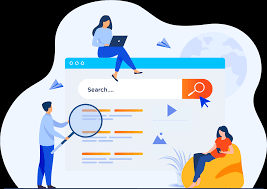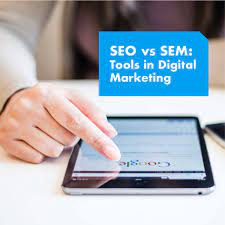Unlocking the Power of On-Page Optimization
When it comes to improving your website’s visibility and ranking on search engines, on-page optimization plays a crucial role. By fine-tuning various elements on your web pages, you can enhance their relevance, usability, and overall performance in search engine results pages (SERPs).
The Basics of On-Page Optimization
On-page optimization involves optimizing individual web pages to improve their search engine rankings and attract more organic traffic. This process includes optimizing various on-page elements such as:
- Title Tags: Crafting unique and descriptive title tags that accurately reflect the content of the page.
- Meta Descriptions: Writing compelling meta descriptions that entice users to click through to your website.
- Heading Tags: Using relevant heading tags (e.g., H1, H2) to structure your content logically and improve readability.
- URL Structure: Creating SEO-friendly URLs that are concise, descriptive, and contain relevant keywords.
- Keyword Optimization: Strategically incorporating target keywords throughout the content while maintaining natural readability.
- Image Alt Text: Adding descriptive alt text to images for improved accessibility and keyword relevance.
- Internal Linking: Establishing a network of internal links to connect related pages and enhance navigation.
The Benefits of On-Page Optimization
Effective on-page optimization can yield numerous benefits for your website, including:
- Improved Search Engine Rankings: Optimizing on-page elements can help search engines better understand and index your content, leading to higher rankings for relevant keywords.
- Enhanced User Experience: By structuring your content logically and optimizing for readability, you can provide users with a seamless browsing experience that encourages engagement and interaction.
- Increase in Organic Traffic: Higher search engine rankings resulting from on-page optimization efforts can drive more organic traffic to your website, increasing visibility and potential conversions.
- Better Click-Through Rates (CTR): Compelling title tags and meta descriptions can attract users’ attention in search results, leading to higher CTRs and improved click-through rates.
In Conclusion
Incorporating on-page optimization techniques into your digital marketing strategy is essential for enhancing your website’s visibility, attracting organic traffic, and improving user engagement. By focusing on key elements such as title tags, meta descriptions, keyword optimization, and internal linking, you can unlock the full potential of your web pages and achieve sustainable success in the competitive online landscape.
Contact us today to learn more about how our expert team can help you maximise your on-page optimization efforts for optimal results!
7 Essential Tips for Effective On-Page Optimisation
- Ensure each page has a unique and descriptive title tag.
- Use header tags (H1, H2, H3) to structure content logically.
- Optimise images by using descriptive file names and alt text.
- Incorporate relevant keywords naturally throughout the content.
- Improve page load speed by compressing images and minifying code.
- Create a clear URL structure with readable, keyword-rich URLs.
- Include internal links to related content within your site.
Ensure each page has a unique and descriptive title tag.
To enhance your website’s on-page optimization, it is essential to ensure that each page features a unique and descriptive title tag. The title tag serves as a concise summary of the page’s content and plays a crucial role in search engine rankings. By crafting distinctive title tags that accurately reflect the topic of each page and incorporate relevant keywords, you can improve visibility in search results and attract more organic traffic. A well-crafted title tag not only helps search engines understand the context of your content but also entices users to click through to your website, making it a fundamental element of effective on-page optimization strategies.
Use header tags (H1, H2, H3) to structure content logically.
Utilising header tags such as H1, H2, and H3 is a fundamental aspect of on-page optimization. These tags not only help search engines better understand the hierarchy and relevance of your content but also improve readability for users. By structuring your content logically with header tags, you can guide visitors through the key points of your webpage and make it easier for them to navigate and consume information. Remember to use header tags strategically to divide your content into sections and sub-sections, ensuring a well-organised and user-friendly experience that enhances both SEO performance and user engagement.
Optimise images by using descriptive file names and alt text.
To enhance on-page optimization, it is crucial to optimise images by utilising descriptive file names and alt text. By naming image files with relevant keywords and providing informative alt text, you not only improve accessibility for visually impaired users but also enhance the overall SEO value of your web pages. Search engines rely on this textual information to understand the context and relevance of images, thereby boosting your website’s visibility and ranking in search results. Incorporating descriptive file names and alt text is a simple yet effective way to maximise the impact of your visual content and improve the user experience on your website.
Incorporate relevant keywords naturally throughout the content.
To enhance your on-page optimization efforts, it is essential to incorporate relevant keywords naturally throughout your content. By strategically integrating target keywords in a seamless and contextually appropriate manner, you can signal to search engines the relevance of your content to users’ search queries. Avoid keyword stuffing and instead focus on creating high-quality, informative content that flows organically while including key terms that align with the intent of your audience. This approach not only improves your search engine visibility but also enhances the overall user experience by providing valuable and engaging information that resonates with visitors.
Improve page load speed by compressing images and minifying code.
To enhance on-page optimization, a valuable tip is to boost page load speed by compressing images and minifying code. By reducing the file size of images through compression techniques and streamlining HTML, CSS, and JavaScript code with minification, you can significantly improve your website’s loading times. This not only enhances user experience by providing faster access to content but also signals search engines that your site is well-optimized for performance, potentially boosting your search engine rankings. Incorporating these practices can have a tangible impact on overall website efficiency and user satisfaction.
Create a clear URL structure with readable, keyword-rich URLs.
Creating a clear URL structure with readable, keyword-rich URLs is a fundamental tip for effective on-page optimization. By crafting concise and descriptive URLs that incorporate relevant keywords, you not only enhance the user experience but also provide search engines with valuable information about the content of your web pages. A well-structured URL not only improves the visibility of your website in search results but also boosts its credibility and relevance to both users and search engines, ultimately contributing to higher rankings and increased organic traffic.
Include internal links to related content within your site.
To enhance your on-page optimization efforts, it is advisable to include internal links to related content within your website. By strategically linking to relevant pages or posts within your site, you not only improve the user experience by providing easy navigation but also help search engines better understand the context and interconnectedness of your content. Internal linking can boost the visibility of key pages, distribute link equity throughout your site, and encourage visitors to explore more of your valuable content, ultimately contributing to improved SEO performance and user engagement.




